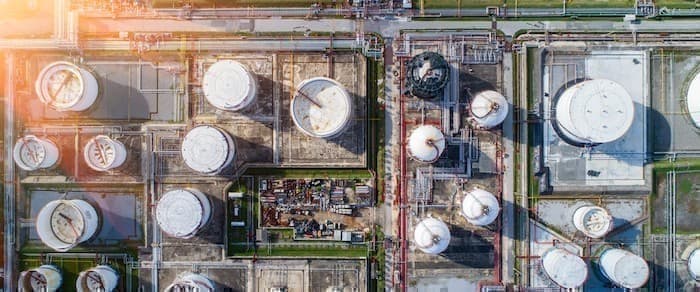China has maintained a strong rate of crude oil imports pretty much since the start of the year, but instead of turning oil markets bullish, it has only served to create confusion.
That’s because while it has been reporting strong import figures, China has also been booking some not-so-good macro figures in the meantime. And this has sparked doubt that its post-pandemic recovery was going in accordance with plans.
This doubt, in turn, has fueled uncertainty about the prospects of oil demand in the world’s largest importer and was part of the reason why oil prices remained subdued for much of this year, which eventually led to Saudi Arabia’s latest production decision. If the uncertainty lingers, supply may have to be tightened further.
The crux of the matter is the question of whether indications of strong oil demand in China mean a strong economy, even as Beijing reports five consecutive months of sub-50 PMI readings, the real estate market is in turmoil, and exports are down for four consecutive months.
Oil imports over the first half of the year averaged 11.4 million barrels daily, which was 11.7% higher than the respective period of 2022. Imports strengthened further in July, although the July daily average was lower than the first-half average, at 10.29 million barrels. Shipments rose in August to 12.43 million barrels daily as refiners rushed to boost production of fuels on strong overseas demand.
At the same time, demand for fuels at home also rose during the summer months, suggesting that whatever problems the property market and industrial sectors had, they did not affect all avenues of oil demand. Yet, not everyone agrees.
Reuters’ Clyde Russell wrote in a column this week that a lot of the extra oil China bought from abroad this year went into storage. He estimated that the country had added some 950,000 barrels daily to its crude oil inventories by July. Then, as prices rose, refiners drew on those inventories at a rate Russell estimates at over 500,000 bpd.
He then went on to suggest that the recent rally in oil prices would lead to a decline in China oil imports later this year, starting in October, when prices catch up with new cargo orders.
Citi analysts, meanwhile, believe the strong rate of oil imports into China so far this year will soon change to a softer one. In a note cited by Dow Jones Newswires, the bank’s analysts argued that strong oil demand was not indicative of an economic rebound.
This seems to suggest that demand could drop at any moment, driven by broader macroeconomic trouble, such as the property sector crunch. However, the analysts added, China is working on addressing the crunch, and the first signs of results should be visible by November.
Until then, the analysts forecast, oil shipments to China would likely be lower than they have been so far this year, with carbon tracking data suggesting the September average could be around 10.8 million barrels daily.
On the other hand, demand for refined products from overseas is likely to remain strong. Europe, a potential growth market for Chinese oil products, is struggling with low fuel stocks and robust demand. This, Reuters reported recently, would lead to a lighter maintenance season among local refiners who cannot afford to miss out on high margins.
Yet they would still need to shut down for a while to carry out some maintenance, with Wood Mackenzie estimating the closures at some 800,000 bpd in daily capacity over the fourth quarter of the year. This, in turn, will open the way for more imports, including from China.
By Charles Kennedy for Oilprice.com
More Top Reads From Oilprice.com:
- Hedge Fund Partner Blasts Oil Demand Decline Narrative
- Germany Passes Modified Fossil-Fuel Heating Law
- European Parliament Approves Higher Renewable Energy Targets



















If there is one single factor by which the economic performance of a country is judged, it is by its energy consumption and imports. Based on this quintessential factor, here are the proofs:
1- Since January 2023 until August, China’s crude oil imports have broken oil previous import records reaching levels not seen before and ranging from 12.4-13.0 million barrels a day (mbd).
2- China has been importing record coal volumes with its imports in August breaking previous records and being the highest since 2015.
3- China has been mopping up whatever gas and LNG it could get its hands on in the global gas market even contracting the bulk a Qatar’s and the United States’ future additional LNG production capacity expected in 2024/25. .
4- China’s economy, the world’s largest based on purchasing power parity (PPP) and 27% bigger than the United States’’ (also based on PPP), has grown in the second quarter of 2023 at 6.3% exceeding projections by both the IMF and the World Bank compared with 1.2% for the US, 0.8 for the EU’s, 2.7% for the World and 0.1-0.3% for Germany.
5- China's seaport trade traffic at 263 million TEUs (20-foot container equivalent units) currently accounts in 2022 for 31.3% of the global seaport traffic or 4.31 times the size of the United States’ at 61million TEUs.
Without China’s growing energy consumption and imports, we wouldn’t have seen Brent crude oil price rising above $92 a barrel and heading towards $100.
Are these the signs of a slowing down economy? I emphatically don’t think so.
Dr Mamdouh G Salameh
International Oil Economist
Global Energy Expert